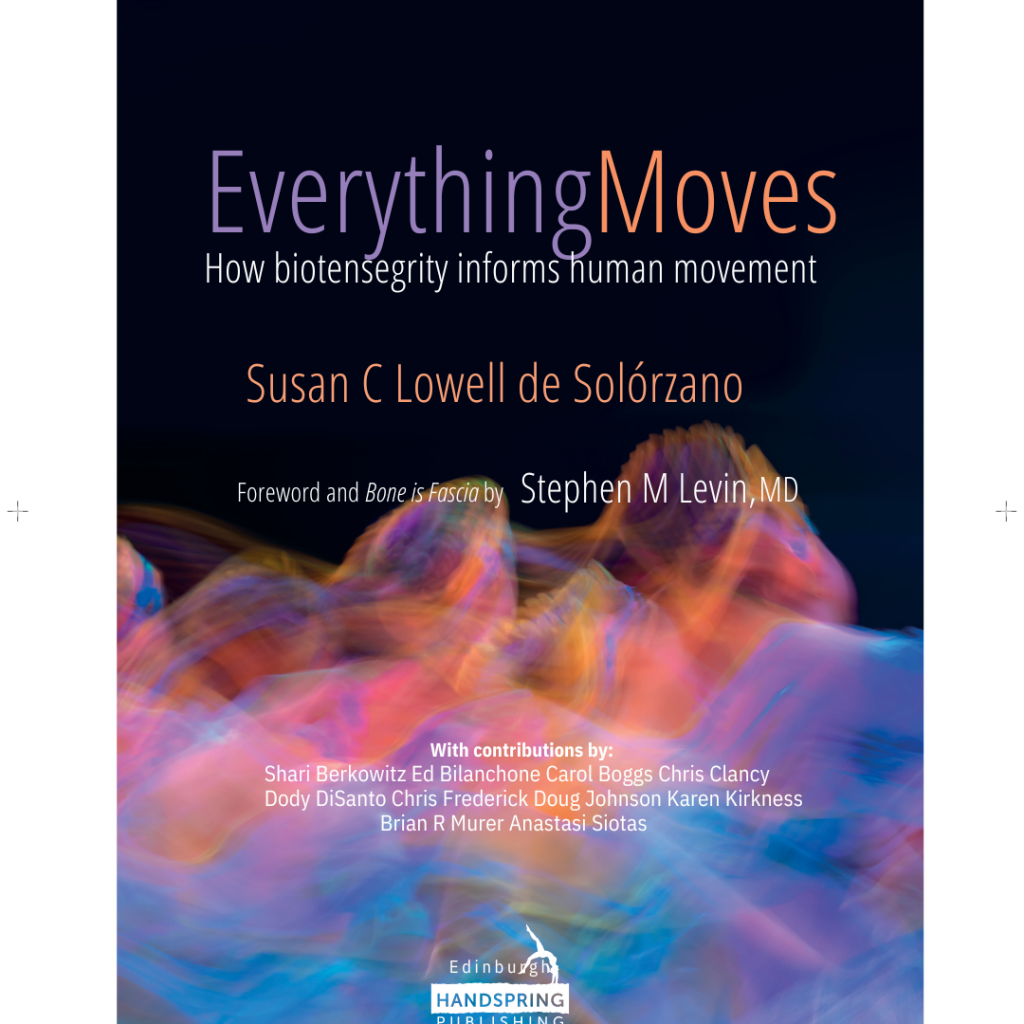
Let’s look at the connection between the human body and Nature’s movements, specifically at spirals. The following is extracted from the book Everything Moves: How biotensegrity informs human movement, with kind permission of Susan Lowell de Solorzano and Handspring Publishing.
“Vines, roots, and shoots: Knowing that nature makes wide use of spirals, imagine how a spiraling action could help a root drill its way through the Earth. We can observe helical growth patterns in vines and in the shoots of new sprouting plants. Consider a vine whose leading shoot has a twining tip reaching out like a hand to grasp. It may seem more efficient to reach out in a straight line, but although this would allow the quickest touch per centimeter of growth, of what use would that touch be? The spiraling structure of the vine tip may require more organismic effort in terms of material generated, but the payoff for that extra effort gives the delicate vine tip the mechanical advantage of being able to hook onto almost anything that a gentle breeze allows it to encounter, catching what it can to pull itself up and wind itself around, and so allows it to climb. Although a straight line seems most efficient, for many actions a curving line is called for because it is functionally more useful. At the molecular level and in the biotensegrity model, just as in a soap bubble, curved lines are actually made of much small[1]er straight lines beyond the level that we can see.
“Experiential: Helical vine tips and tree roots Imagine you are standing like a tree, extending and growing your roots down into the Earth in your quest for nourishment. Your root tip suddenly meets with a rock. What do you do? Do you give up? No. You respond to the obstruction by reconfiguring and changing direction. Gently but steadfastly persevering, your root tip must take a turn to achieve its ideal path. Next, stand near a wall that has a window frame or door frame. Place a fingertip on the wall and close your eyes. Imagine your fingertip to be a root tip growing along and following the wall. When you come to the door or window frame, feel the interruption in your path. Allow your fingertip root tip to rotate and roll just a bit, just enough, this way and that, so that it can wind and find its way around. When you turn, what do you feel? Is this a local movement or a global movement? Feel what’s involved in the action as the body generates a helical movement response. Notice how you can use the frame, the obstruction itself, to provide the counterforce and the guidance needed to adjust your angle and direction just enough to turn. When your root tip turns, feel how everything behind it is also part of the turning. A related and useful project is to simply sprout a few seeds and observe the spiraling root tips and shoots as they emerge.
“Spirals in the body: Spirals are found in structures all through the body, including our DNA, the helices that tiny actin filaments and other proteins form, the crossed-helical arrangement of collagen in muscular fascia (Scarr 2016), and the readily visible layered and crossed-spiral patterns in the muscles. Even the flow of our blood has been widely recognized as spiralic. The helical structure of the heart has been well documented since the last century, when Spanish cardiologist Francisco “Paco” Torrent-Guasp first unraveled mammalian hearts to reveal that the muscle’s spiral structural continuum was more like a twisted rope (Fig. 8.8). This discovery led to new techniques, such as by Torrent-Guasp’s colleague, cardiothoracic surgeon Dr Gerald Buckberg, who taught widely on the helical structure of the heart and pioneered treatment of congestive heart failure by altering ventricular geometry. Despite this, of the many commercially available models of the heart, almost none are based on Torrent-Guasp’s discovery, and almost all are anatomical, presenting the organ in the shape in which it is traditionally cut and sliced from a cadaver, which gives a very different impression of the organ. We may still be a long way from fully understanding all the spirals of the body and the possibilities for movement these structures may yield.
“Spirals can be energy efficient: The everyday moves of climbing, crawling, walking, and throwing are typically done using the contralateral (oppo[1]site side) leg and arm. Doing any of these movements using the ipsilateral (same side) leg and arm will typi[1]cally feel unbalanced and less natural. For most of us, in the case of trying to climb a ladder with left (or right) leg and arm simultaneously, a sense of falling off to one side feels imminent. Ipsilateral crawling is nearly impossible to do, and at the very least is a lot more difficult than using the opposite side leg and arm to move forward. In walk[1]ing, we tend to feel mechanical when swinging the same[1]side arm and leg forward. Similar intuitions typically arise when rolling a ball (as in bowling), throwing a ball, or hitting a ball with a racket. The opposite-side leg and arm will coordinate and generate a series of helical force lines through the system to get the job done, the weight transferring up from the leg to propel the opposite arm. The body will find its way to optimal efficiency whenever possible.
This excerpt also appears in the Members’ Area, complete with links to the complete chapter (chapter 8) plus other related videos/articles accessible to members. For more information on becoming a member, please click here.
Joining The Hub
There are many benefits to joining The Fascia Hub community. We will be continually revising and updating how we can better support our members. Of course, if you have any ideas or thoughts as to what you would like to see, then we would love to hear from you. Our membership proposition is continually evolving and changing to ensure that we bring you the best from the world of fascia. If there is something you would like to learn more about, please do drop us a line and let us know.

